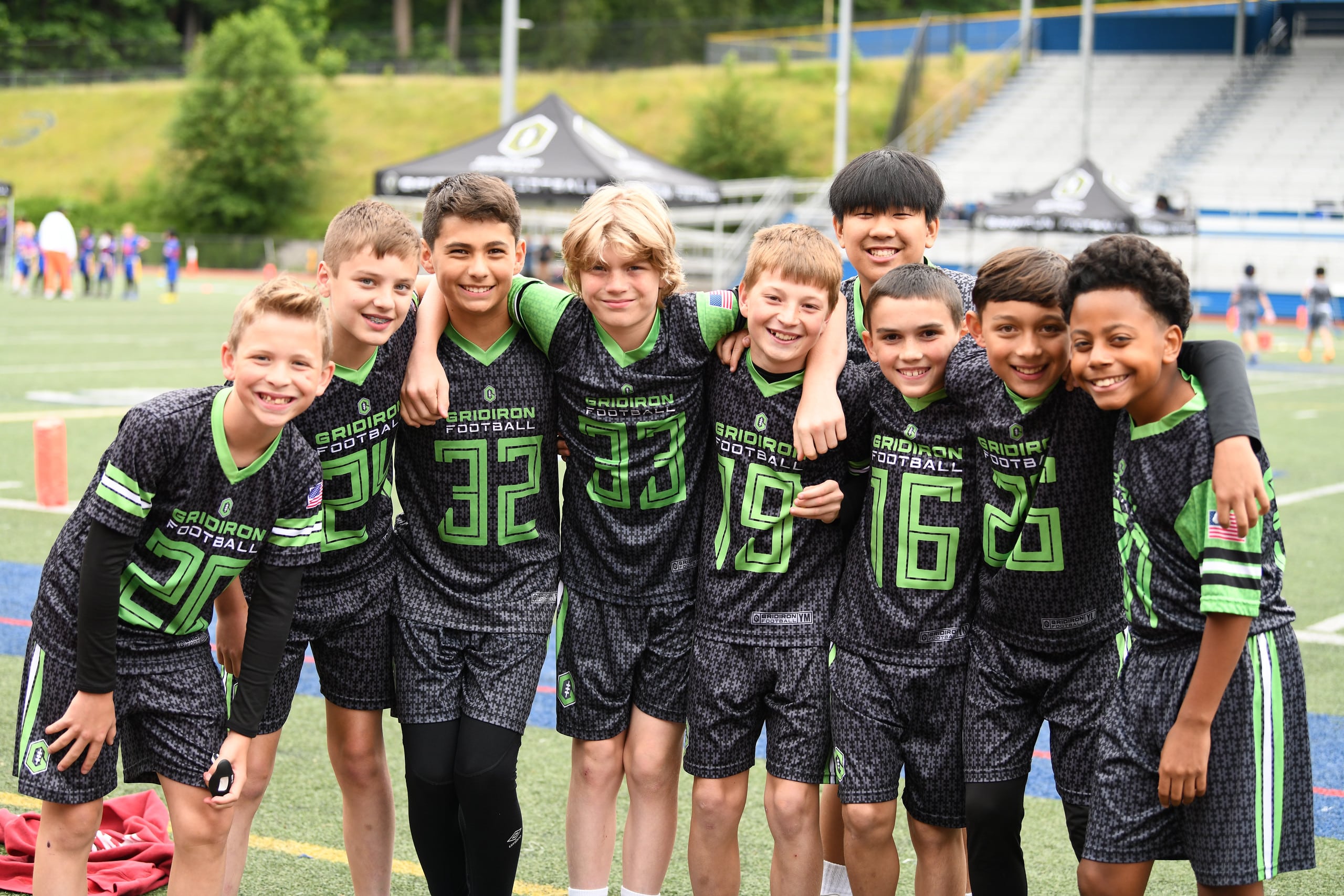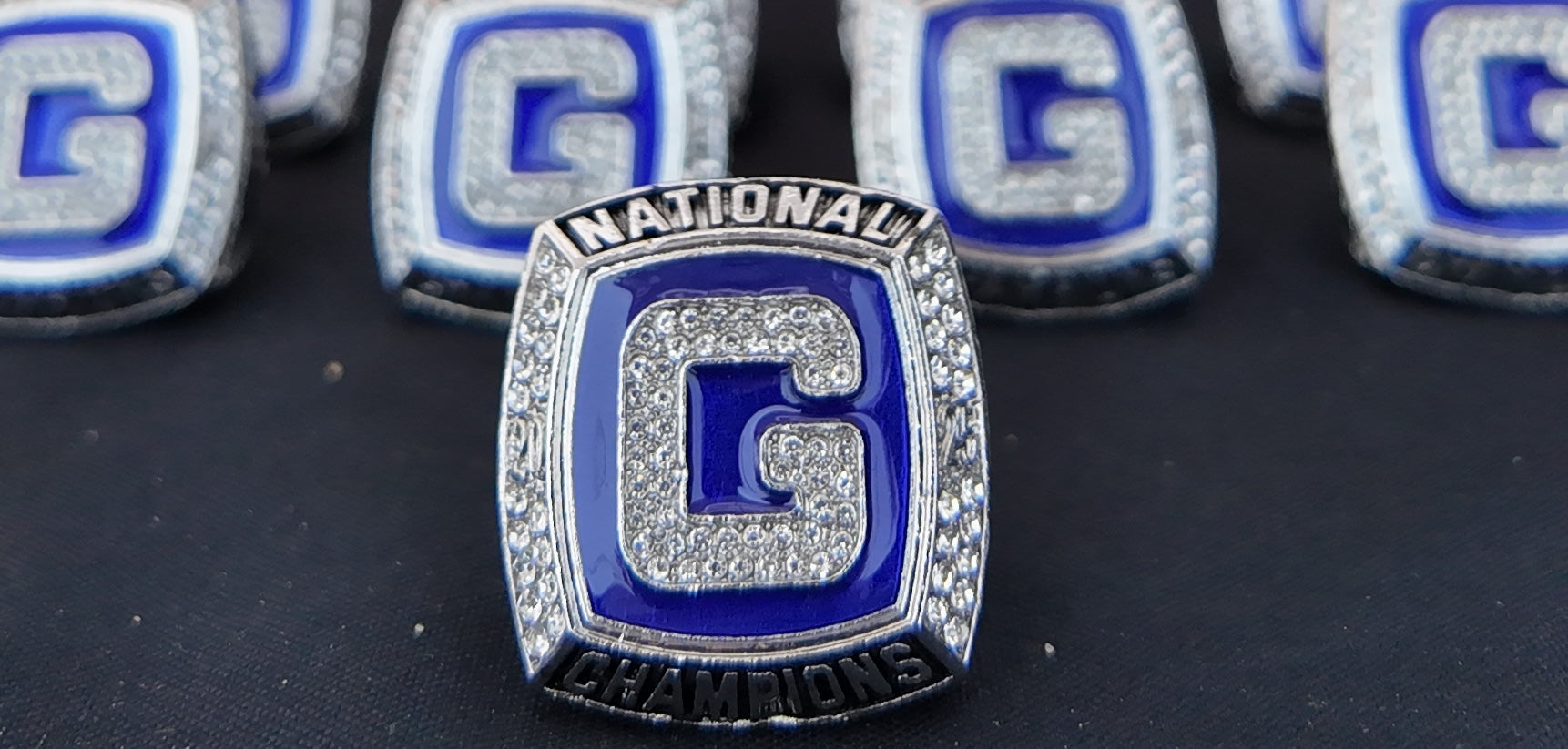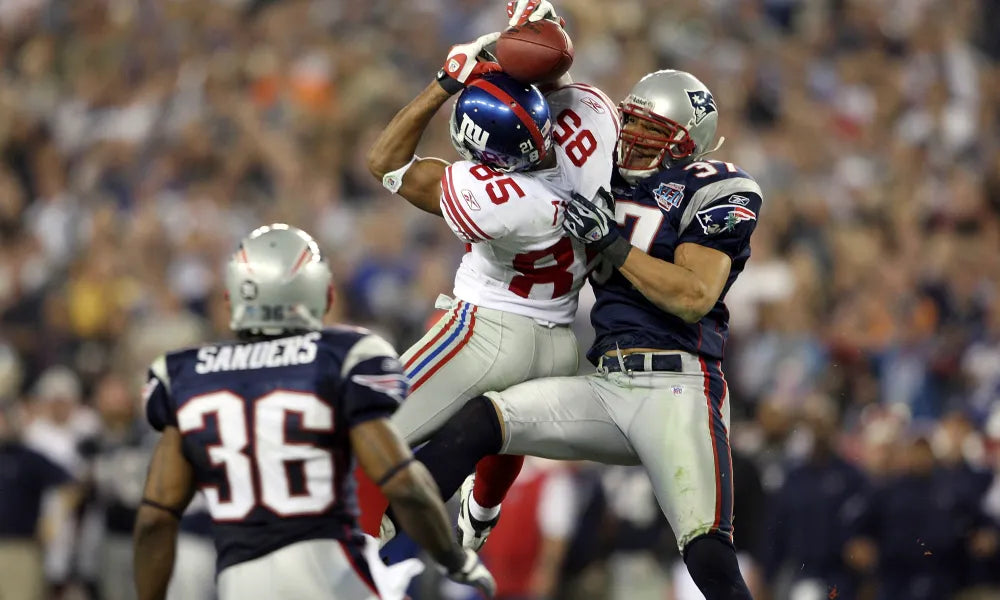Flag football is the fastest growing sport in the world. And for good reason.
It offers fast play, smaller teams, condensed seasons without travel, perfect off-season training for other sports, competitive yet accessible play for both boys and girls, and a safer all-around experience for our kids.
New to the sport? Here are a few basics to get you started– from rules and terms to player positions.
How to Play Flag Football
Every game begins with a coin toss to determine who will start with the ball. Games last 40 minutes, divided into two- 20 minutes halves. The clock only stops for a 5-minute halftime, timeouts (one per half), or injury, making games fast and competitive.
The offense begins on its 5-yard line and has four plays (or downs) to cross the midfield for a first down. If a team fails to reach that first down after three plays, they can either “punt” (turn the ball over to the opposing team, who will start on their own 5-yard line) or attempt a fourth down. If the offense tries and fails to cross midfield on the fourth down, the opposing team gets possession of the ball from the spot of the football.
If the offense succeeds in crossing midfield, they’ll have three remaining downs to score a point. Touchdowns are worth six points, extra points are worth 1, 2 and sometimes 3 points, and safeties are worth two points.
Flag Football Limits Player Contact
There are several differences between traditional tackle and flag football, but none more important than this– there’s no contact allowed in flag football. This includes tackling, diving, kicking, blocking, screening or fumbles. Instead, players attempt to remove one or both flags that hang from a belt around the ball-carrier’s waist.
Flag Football Team & Field Sizes
Most Gridiron flag football leagues compete in 5-on-5 (five players on the field from each team). To accommodate smaller team sizes, a flag football field is shorter than a tackle football field. It typically measures 25-30 yards wide and 70 yards long, with two 10-yard end zones and a midfield line-to-gain.

Flag Football Terms
Blitzing is a 10-yard mark at which defensive players that “rush the passer” can begin the play.
Blocking is obstructing or physically contacting an opponent with any part of the body. No blocking is allowed in flag football.
A 7-second “sack/passing clock” is administered by an official. The required cadence is a consistent 7, 6, 5, 4, 3, 2, 1, Sack!
A dead ball is not in play. This happens when a point is scored, the ball touches the ground, the ball-carrier’s flag is pulled or falls off, the ball-carrier steps out-of-bounds, or the ball-carrier’s knee touches the ground.
The defense is the team who doesn’t have possession of the ball and is trying to prevent the other team from scoring by pulling the ball-carrier’s flags down.
A down is the period after the ball is snapped when the offense attempts to advance down the field. The offense needs 4 to get a first down and 4 to score. Once the team gains a first down they will receive 4 more downs to score.
End zones are located on opposite ends of the field. The ball-carrier must cross into their end zone to score a touchdown.
Flag guarding is the act of a ball carrier denying a defender the opportunity to capture his flag in any physical way.
Laterals / Pitches means ball carriers may use backward passes and legal pitches behind the line-of-scrimmage.
Line-to-gain is the line the offense must cross to get a first down or touchdown.
Line of scrimmage is an imaginary line that expands the width of the field and runs through the point of the football. It indicates where teams can’t cross until the play has begun.
Intercepted passes remain live and may be returned for points. And intercepted passes during Point After Touchdown (PAT) attempts may be returned for 2 points.
The offense is the team who has possession of the ball and is trying to advance to the opponent’s end zone for a touchdown.
A Point After Touchdown (PAT) equals 1 pt from the 5-yard line (pass play only), 2 pts from the 10-yard line (run or pass) or 3 pts from midfield (run or pass).
Punting may occur on a fourth down if a first down has not yet been reached. A coach will instruct the game official to move the ball to the opponent’s 5-yard line as a change of possession.
No QB sneaks means the player taking the snap cannot run the ball past the line of scrimmage unless pursued by a defender.
A safety occurs when the ball becomes dead in a team's own end zone or a team commits a foul in their end zone.
Snapping is when the center hands or tosses the football between their legs to the quarterback, thus beginning the down.
No run zones are 5 yards before midfield and 5 yards before the end zone. They are enforced by some leagues as a safety measure to discourage power-runs, diving, etc., near the 1st down line and goal line. When the ball is spotted inside a “No Run Zone” the offense must execute a forward pass that breaks the line-of-scrimmage.
Flag Football Positions
Most of the same positions in tackle football are found in flag football. Here’s a breakdown of each one:
The Center snaps the ball to the quarterback and then can run for a pass as a receiver.
The Quarterback receives the snap and passes the ball or hands it off. A quarterback is not allowed to run with the ball after the snap.
Wide Receivers and Running Backs are eligible to receive a handoff or pass from the quarterback. If they throw the ball to a teammate, they then become passers.
The Rusher attempts to prevent the quarterback from passing the ball (they must be at least seven feet off the line of scrimmage at the snap to rush the passer).
Defensive Backs line up to face the wide receivers at the start of the play. They guard against the first run and pass.
The Safety stands farther back from the line of scrimmage and is responsible for stopping opponents who get loose.
--
Ready for more?
Stay tuned for our second installment of Flag Football 101, with a discussion on essential flag football equipment and plays.
Can’t wait to hit the fields? Find a Gridiron league near you to experience flag football at its finest!




Share:
“Grow the Game” Through Impactful Coaches
Setting the Stage for the Future of Flag Football
1 comment
Good breakdown for a beginner, understanding the game of flag football for girls.